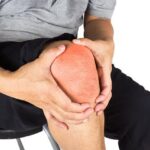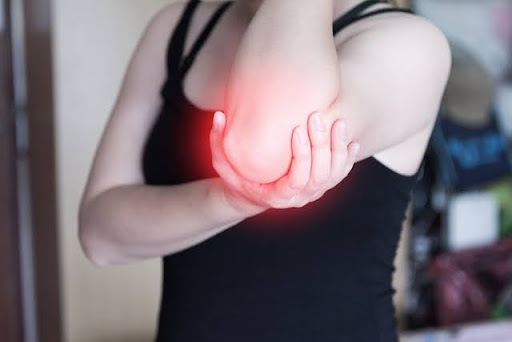Blog
Peptides for Joint Pain and Recovery: What Science Says

Your knees ache when you climb stairs. Your shoulder protests every overhead reach. That nagging ankle injury from last year hasn’t healed properly.
If this sounds familiar, you’re not alone. Millions deal with chronic joint pain that limits what they can do. The usual fixes often provide temporary relief at best.
But what if there was a different approach? One that helps your body repair itself instead of just making the pain?
That’s where the best peptides for joint pain come in. These tiny protein fragments work like cellular repair crews. The compounds are gaining serious attention from athletes and anyone tired of living with joint issues.
Science shows certain peptides for ligament repair can kickstart your body’s natural healing processes. They help build new tissue, reduce inflammation, and promote blood flow to damaged areas.
It’s not magic, it’s your body’s way of working as it should, but with better instructions.
How Peptides Aid Joint and Tendon Recovery
Think of peptides for tendon repair as your body’s construction crew supervisors. They don’t do the work themselves; they tell your cells exactly what to do and when.
When you injure a tendon or joint, your body starts a complex repair process. Sometimes it needs better instructions. That’s where these cellular messengers come in.
There is a three-stage healing process:
1. Speeding up tissue repair
When you injure a tendon or joint, your body starts a complex repair process. Sometimes it needs better instructions. That’s where these cellular messengers come in.
BPC-157 specifically helps cells migrate to damaged areas. It’s like having GPS for your healing cells; they know exactly where to go. TB-500 does something similar but focuses on moving different types of repair cells.
2. Calming down inflammation
Here’s the thing about inflammation…a little bit helps healing, but too much causes problems. Chronic inflammation tells your repair crews to stop working.
Certain peptides act like mediators in this process. They turn down the volume of inflammatory signals while boosting anti-inflammatory ones. This creates the right environment for actual healing to happen.
3. Building better collagen
Collagen is like the steel framework of your tendons and ligaments. When it’s damaged, everything feels weak and unstable.
BPC-157 specifically targets collagen production, especially Type I collagen—the good stuff your tendons need. It activates growth factors that tell your body to build stronger, more flexible tissue.
| Peptide | Key Mechanisms | Effects on Recovery |
| BPC-157 | Stimulates fibroblast migration, angiogenesis, and collagen synthesis | Accelerates tendon and ligament healing, reduces inflammation |
| TB-500 | Promotes cell migration, differentiation, and angiogenesis | Enhances tissue repair, reduces inflammation |
These peptides work because they target multiple healing pathways at once. Instead of just treating symptoms, they help your body repair itself more effectively. It’s like upgrading your cellular repair software to the latest version.
BPC-157 – The Gold Standard for Soft Tissue Healing
Among the best peptides for joint pain, BPC-157 stands in a league of its own. Athletes call it “the Wolverine peptide” because of how fast it helps tissues heal.
This synthetic compound comes from a protective protein found in your stomach. But don’t let that fool you, its healing powers extend far beyond gut health.
Most treatments target one problem at a time. BPC-157 works like a Swiss Army knife for tissue repair. It tackles inflammation, builds new blood vessels, and kickstarts collagen production all at once.
Research shows this peptide helps with gut issues, ligament tears, tendon injuries, and joint problems. That’s pretty remarkable for a single compound.
Gut healing: BPC-157 originally helped heal stomach problems like ulcers. It turns out the same stuff that fixes your gut can help other parts of your body, too. Pretty cool how that works.
Ligament and tendon repair: This is where BPC-157 shines for joint problems. Instead of just covering up pain, it fixes what’s broken.
It gets your repair cells moving faster and helps build better collagen. You end up with tissue that’s stronger and works better than it did before.
Joint recovery: BPC-157 keeps your cartilage safe while helping it heal. Studies show it calms down joint inflammation and gets you moving better after injuries.
The early human results look promising. We need bigger studies, but what we’re seeing so far gives hope to people dealing with ongoing joint pain.
BPC-157 operates through four main pathways:
- Blood vessel formation: Creates new routes for nutrients to reach damaged tissue
- Collagen boost: Builds the structural framework your joints need
- Inflammation control: Calms down excessive inflammatory responses
- Cellular repair: Gets your body’s repair crews working more efficiently
TB-500 – Speeding Recovery and Reducing Inflammation
If BPC-157 is the construction supervisor, TB-500 is the logistics coordinator. These peptides for tendon repair specialists excel at getting repair cells exactly where they need to go.
TB-500 is a synthetic version of thymosin beta-4, a peptide your body naturally produces. But when you’re injured, you often need more than your body can make on its own.
What makes TB-500 unique among peptides for healing tendons is its focus on cellular movement. Think of it like a GPS for your repair cells.
When tissue gets damaged, your body needs to send the right cells to the right place. TB-500 makes this happen faster and more efficiently. It helps cells navigate to injury sites.
This cellular migration is crucial for building new blood vessels. More blood vessels mean better nutrient delivery and faster healing.
Post-injury recovery can make or break an athletic career. Traditional rest and rehab often take months. Athletes need something that speeds up the process.
TB-500 delivers on that promise. It reduces inflammation while promoting tissue regeneration at the same time. That’s a powerful combination for anyone dealing with tendon strains or ligament injuries.
Post-surgery recovery is another area where TB-500 shines. It helps reduce scar tissue formation while improving flexibility. This means getting back to full function faster.
People using TB-500 typically notice:
- Reduced swelling and inflammation within days
- Improved flexibility and range of motion
- Faster healing of tendon and ligament injuries
- Less scar tissue formation
- Better overall tissue quality after healing
Some injuries just won’t heal properly. Maybe you’ve dealt with chronic tendinitis or a ligament that never quite feels right again. TB-500 often helps when traditional treatments have failed.
Its ability to promote proper tissue regeneration, not just scar formation, makes the difference. You don’t just get healed tissue; you get functional tissue that works.
For athletes, weekend warriors, or anyone tired of living with nagging injuries, TB-500 offers a genuine path back to full function.
Supporting Recovery with Growth Hormone–Stimulating Peptides
Sometimes the best approach to healing isn’t working directly on damaged tissue. Instead, it’s about giving your body better tools to fix itself.
That’s where growth hormone-stimulating peptides come in. Peptide therapy for joint recovery often includes compounds like CJC-1295 and Ipamorelin that work behind the scenes. They boost your body’s natural repair systems.
Human growth hormone isn’t just for growing taller as a kid. It’s your body’s master tissue repair coordinator throughout life.
The problem? HGH production drops significantly as you age. By your 40s, you’re making about half what you did in your 20s.
This decline shows up as slower healing, achy joints, and tissues that just don’t bounce back like they used to.
CJC-1295 acts like a signal amplifier for your pituitary gland. It tells your brain to release more growth hormone naturally.
Ipamorelin works through a different pathway, mimicking ghrelin—your body’s “hunger hormone.” But it does this without making you constantly hungry or stressed.
Together, they create a sustained boost in HGH levels. This isn’t like taking synthetic growth hormone; you’re just optimizing what your body already makes.
When your HGH levels increase, several things happen that benefit joint health:
- Enhanced tissue building: HGH ramps up protein synthesis throughout your body. This means better cartilage production, stronger tendons, and more resilient ligaments.
- Better collagen quality: Your joints need high-quality collagen to stay flexible and strong. HGH directly supports collagen production, especially the types your joints crave.
- Inflammation control: Chronic inflammation is a joint killer. Higher HGH levels help modulate inflammatory responses naturally.
- Muscle support: Strong muscles protect your joints from injury. HGH promotes muscle growth and repair, creating better joint stability.
Unlike peptides that work directly on injuries, CJC-1295 + Ipamorelin offer long-term benefits. They don’t just help you heal from current problems; they help prevent future ones.
People using this combination often report better sleep, improved recovery between workouts, and joints that feel more resilient overall.
This approach works especially well for people who want to stay ahead of joint problems. Athletes in their 30s and beyond often use it to maintain peak performance. It’s also valuable for anyone recovering from surgery or dealing with chronic joint issues that haven’t responded well to other treatments.
What makes CJC-1295 + Ipamorelin appealing is how it works with your body’s existing systems. You’re not introducing foreign hormones, you’re just optimizing your natural production. This makes peptide therapy for joint recovery a more sustainable long-term strategy than many alternatives.
Peptide Protocols and Timing for Optimal Results
Getting the most from peptides for healing tendons isn’t just about which ones you use. It’s about how you use them and what you do to support the process.
Think of peptides as high-performance tools that work best when you follow the right protocols.
The basics of peptide timing
Most peptides for joint pain work on specific schedules. Timing your injections right makes a huge difference.
- BPC-157 and TB-500: Typically 2–3 times per week via subcutaneous injection
- CJC-1295 + Ipamorelin: Often daily or every other day, depending on your protocol
Dosages vary widely based on your situation. BPC-157 might range from 200–500 mcg per injection. TB-500 protocols often start around 2 mg weekly.
Always work with a qualified physician to determine your specific dosage and frequency.
What to expect and when
Most people notice reduced pain and inflammation first in weeks 1-3. Your mobility might improve before you see tissue changes. Don’t get discouraged if results seem slow initially.
Weeks 3-6 are when tissue repair becomes noticeable. Strength and flexibility typically improve during this window. You might feel like your injury is actually getting better, not just feeling better temporarily.
After week 6, sustained joint health and reduced re-injury risk emerge.
Supporting your success
Peptides work best when you create the right conditions for healing.
Aim for at least half your body weight in ounces of water daily. Your body needs building blocks to repair tissue:
- Protein: Supplies amino acids for collagen synthesis
- Omega-3s: Reduce inflammation naturally
- Vitamin C: Essential for collagen formation
- Vitamin D: Supports bone health and immune function
Gentle, guided movement helps peptides work better. Work with a physical therapist who understands peptide therapy.
Listen to your body and allow adequate recovery time.
The people who get the best results combine smart protocols with lifestyle optimization. Remember: peptide therapy is an investment in your long-term health.
Take Control of Your Joint Health Today
The science is clear: peptides for joint pain like BPC-157, TB-500, and CJC-1295 + Ipamorelin offer genuine hope for chronic joint issues.
These compounds address root causes, not just symptoms. They promote tissue repair, reduce inflammation, and support long-term joint health.
When used under professional supervision, peptides demonstrate excellent safety profiles with minimal side effects.
Ready to take control of joint pain naturally? Explore the physician-formulated peptide therapies at LIVV Natural for recovery and book a consultation to start healing today.

